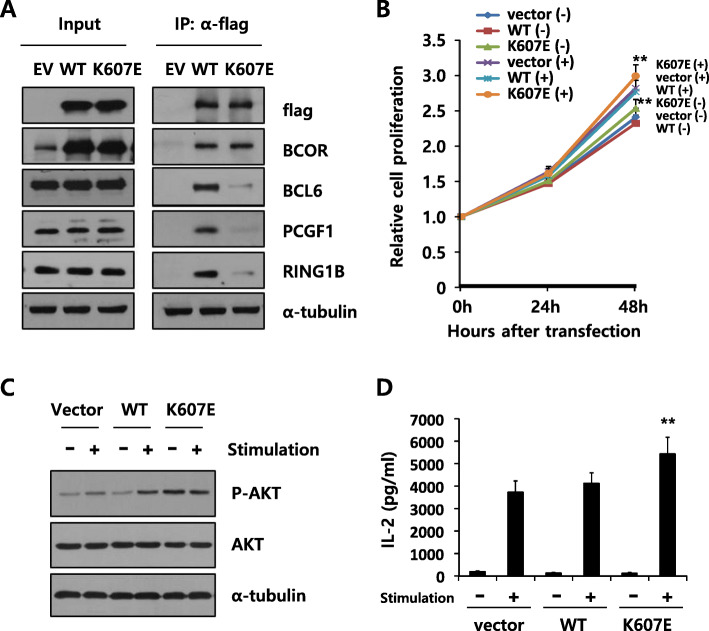Fig. 2.
Functional analyses of the K607E mutation in BCOR. a Expression of BCOR K607E mutant decreased the interaction with BCL6, PCGF1, and RING1B. BJAB cells were transfected with plasmids encoding flag-tagged wild-type (WT) BCOR or K607E mutant, and immunoprecipitation was performed using an anti-flag M2 antibody. Immunoblotting analysis was performed using anti-BCL6, PCGF1, and RING1B. Alpha-tubulin was used as the loading control. This result is representative of four independent experiments. The uncropped blots are presented in Supplementary Figure S4 (Additional file 5). b Enhanced cell proliferation in K607E mutant expressing mutated BCOR (**P < 0.01 compared with cells expressing wild-type BCOR). Jurkat cells were transfected with wild-type BCOR or K607E mutant expressing plasmids. After 48 h, cells were stimulated with plate-bound anti-CD3/CD28. Data are shown as the mean ± SEM of six independent experiments performed in triplicates. c Expression of BCOR K607E mutant enhanced phosphorylation of AKT without stimulation. The blot was probed with anti–phospho-AKT antibody, and subsequently stripped and reprobed with anti-AKT antibody. Alpha-tubulin was used as the loading control. This result is representative of three independent experiments. The uncropped blots are presented in Supplementary Figure S4 (Additional file 5). d Expression of BCOR K607E mutant enhanced IL-2 production after stimulation with PMA and ionomycin (**P < 0.01 compared with cells expressing wild-type BCOR). The results are expressed as the mean ± SEM of six independent experiments performed in triplicates

